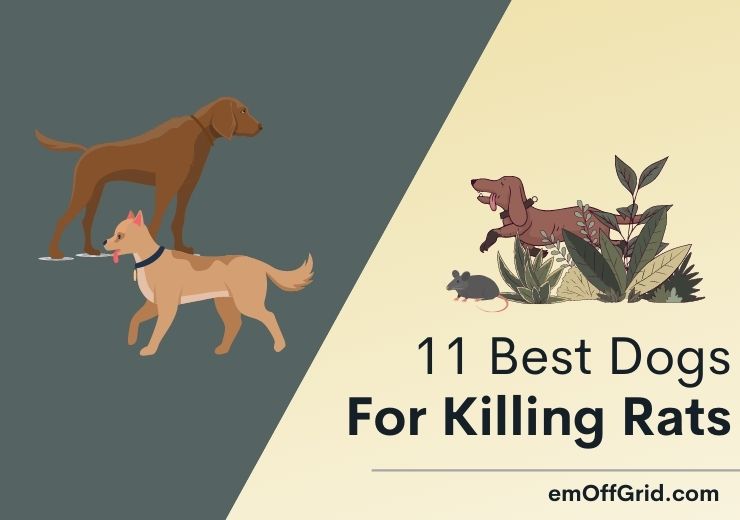Contrary to what many people think, it’s not just cats that kill rats.
Rats can also be kept at bay by dogs, who will chase and kill them. But which dog breeds are best at killing rats, and which have been bred to do so?
There are numerous dog breeds that excel at catching rats.
We’ve listed the many kinds of rat catchers and the variations between them in the list below — you never know, your rat catching dog might be on this article.
This article contains everything you need to know about the finest rat-killing dog breeds.
We have also included additional information to help you learn more about their specific characteristics. Let’s get started.
Contents
Are Dogs Better at Dealing with Rats than Cats?

Ratting dogs, often known as ratter dog breeds, are magnificent. It’s funny how cats get all the press for being rat killers yet terriers are true killers.
Domesticated cats do not hunt rodents for the sake of hunting; they may do so if they are bored and want to give you a rodent gift, but they do not do it on a regular basis.
Dogs, on the other hand, have spent so much time chasing, catching, and killing vermin that it’s practically in their DNA.
Therefore, it is safe to assume that dogs are much better suited for the job as compared to cats.
Things to consider when choosing dog for killing rats
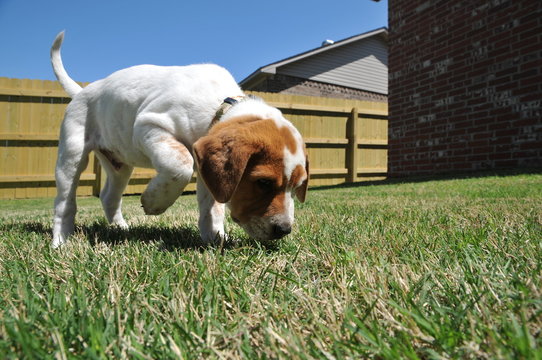
Before you choose a dog to kill rats, there are things you have to consider. After all, apart from killing rats, this dog will live with you and with other people or animals.
It is therefore important that you think about the different aspects that are important before choosing the dog you want. Here are some important factors to consider.
Temperament
When choosing a puppy, the temperament of the dog is likely the most crucial element to consider.
Fortunately, based on the breed, we can predict a lot about how a puppy will behave and the way it relates with people, other dogs, and other animals around it.
Care requirement
How much do you have to care for the animal? There are several things that a dog will require so that it remains healthy and active. For instance, there are dogs that require regular brushing of the hair.
Also, you will find that some dog breeds tend to be prone to catching certain illnesses. Such dogs will need regular vet visits.
It is important to check if you will be able to provide the level of care that the dog requires.
Budget
Different dogs have different costs.
No matter how you get a dog, there are hard costs associated with caring for them.
Immunizations, parasite treatment, neutering, and spaying are all known medical costs, but be prepared for the unexpected health difficulties as well.
The cost of feeding a pet varies depending on its size, age, and health. If your dog thrives on ordinary dog food, that’s fantastic!
However, you could acquire a need for a specific, more expensive diet as a result of food allergies or health difficulties like heart or renal diseases.
You should also include in the cost of training, boarding, and grooming if these services are required.
Adult size
Dogs, just like all other animals, will grow to adult sizes. The adult sizes differ from one type of dog to the other. You will find that some adult dogs are larger than others.
That can pose a problem to you considering your living situation. If a dog is too big, there are chances that you will not have adequate space for it. Make sure that the dog you choose will not have a problem.
Furthermore, An adult dog will reflect his or her former upbringing, so there may be some issues to work through.
If you choose an adult dog, it is likely that it came from one of three places: a charity like Blue Cross, a private household where the owners are no longer able to care for the dog, or a breed rescue club.
Best dogs for killing rats
| Breeds | Appearance | Lifespan | Cost |
| Rat Terrier | Black Tan | 15-18 years | $900-$4000 |
| Crain Terrier | Black, Cream, Grey Brindle, Grey | 12-15 years | $1200-$5000 |
| Yorkshire Terrier | Black and Tan | 13-16 years | $1500-$3000 |
| Norfolk Terrier | Black and tan, red, Wheaten, grizzle | 12-15 years | $3500-$6500 |
| Russell Terrier | White with black or tan markings | 13-16 years | $800-$1500 |
| West Highland White Terrier | White | 12-16 years | About $1200 |
| Dachshund | Black, Blue and tan, Black and tan, chocolate and cream, cream. | 12-16 years | $1200-$2000 |
| Miniature schnauzer | Black, Black and Silver, White | 12-15 years | $500-$2700 |
| Lakeland Terrier | Black, red, liver, black and tan, blue. | 12-16 years | $1800-$2500 |
| German Pinscher | Red and Black | 12-14 years | $2000-$3000 |
| Papillion | White, sable, white and chocolate. | 13-15years | $1200 |
Rat terrier
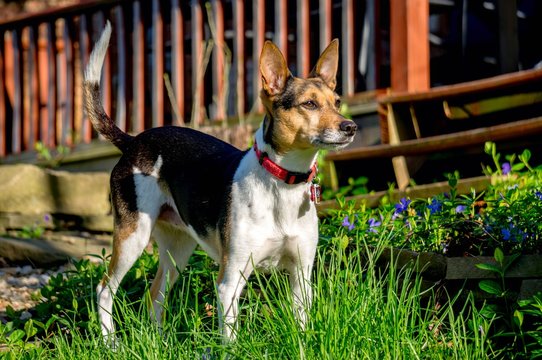
The Rat Terrier is originally from England where it was used to bait rats. In the 1890s, the dog was introduced to America and became popular as a house pet.
As you can tell from the name, this small, feisty and energetic breed is skillful and swift in hunting and killing rats. Exterminators have used it for years in ridding larger homesteads and farms of rats.
This weighs between 10 and 25 pounds and stands between 10 and 18 inches at the shoulders.
It has a range of coat colors to choose from. Rat Terriers have a typical black tan point with piebald spotting.
They appreciate outdoor activities. Its social sensitivity makes them easy to teach and live with for the ordinary pet owner, but it also means that significant socializing from a young age is required.
Rat Terriers, like most active and bright breeds, thrive when given enough of mental stimulation and exercise.
If they are properly trained from an early age, they are usually quite loyal to their owners and respectful.
Meat is an important part of your Rat Terrier’s diet: chicken (or other poultry meat), pork, beef, and venison are all good options.
They also benefit from supplementary nourishment from fruits and vegetables.
Rat Terriers can cost anywhere from $300 to $4000, but the average price for a purebred Rat Terrier puppy with papers is around $425.
Carhartt Pet Fully Adjustable Webbing Collars for Dogs, Reflective Stitching for Visibility
- Carhartt Dog Collar I Built of rugged construction and reflective triple-needle stitching for dogs that work 24/7
- Quality You Can Trust I Ultra-durable collar is up for whatever task comes your dog’s way. Constructed from durable nylon webbing with duck canvas weave
- Low Light Visibility I Reflective triple needle stitch for low-light visibility. Plastic strap keeper and adjuster
Cairn terrier
The Cairn terrier was developed in Scotland to look for pests by digging into mounds of rocks known as cairns.
The dog is able to push through tiny spaces and stone fences during hunts for small prey.
The Cairn, with his shaggy coat, is barely 13 or 14 pounds. This dog s manly black, cream, brindle, grey brindle, or grey.
This breed is very friendly, even to children.you will notice that some of the small dog breeds cannot take the rough play that children can dish out.
However, this dog is different in that it actually loves that kind of play. There are chances that the dog will actually have some ideas.
It’s a different story with small hairy creatures.
The Cairn recalls catching otters, foxes, and other vermin on Highland farms, and he’s unlikely to differentiate between cats, hamsters, and other tiny creatures.
Always walk him on a leash to prevent him from chasing other animals.
The Cairn terrier is a low-maintenance breed that just requires weekly combing to keep shedding at bay. Crain terriers are available for adoption via rescue organizations and pet stores.
Cairn terrier ownership costs an average of $18,465. Supplies, training, medical fees, food, treats, grooming expenditures, licensing, and microchip are all included.
Yorkshire terrier
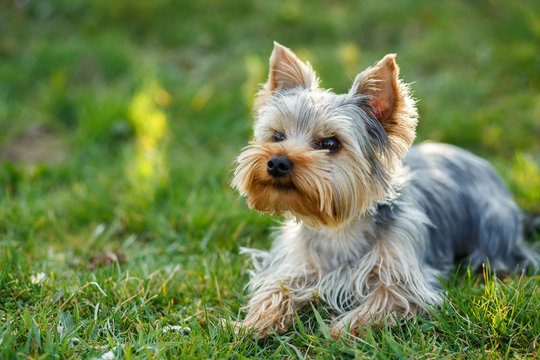
The breed has a small size and a very energetic nature, which makes him great for catching mice.
The dog came into existence in the 19th century, in Yorkshire, England. It will normally grow to around 7 pounds maximum.
Most of the dogs have black and tan coats, even though there are those that have golden, or silverish-grey coats.
Expect to see a very playful and lively dog when you get this terrier. However, do not leave it alone for a long time since it will have separation anxiety.
If you will leave the dog occasionally, it is recommended that you get it another dog for companionship.
Friendly- Yorkshire Terriers are known for being extremely gregarious and people-friendly.
It’s worth noting, though, that encountering a Yorkie with a terrible attitude is not uncommon. So keep an eye out for the ankle biter.
As for trainability, they do well in obedience training in the correct atmosphere, with gentle treatment being a necessity.
Because of its rarity and purebred status, a single dog can cost upwards of a thousand dollars, with an annual cost of $1,800 for this breed.
These estimates add up to a total cost of $25,000 for your Yorkie over its lifetime.
Norfolk terrier
The Norfolk terrier is a breed that originated in the United Kingdom, notably Norfolk County, as the name suggests.
This is a breed that will only grow to around 10 inches at the shoulder. It has a stiff, wiry, and straight coat, which is either black and tan, red, wheaten, or grizzled.
Norfolk Terriers are little, sweet, and devoted dogs who will happily curl up in your lap. Despite their toyish appearance, they are genuine, confident, robust, and adventurous.
When the Norfolk terrier sees an animal scurrying away, he will chase it down. That is the natural tendency to keep hunting.
They have a lot in common with their Norwich terrier cousins. Norfolk are more gregarious than most terriers, yet they still retain a lot of terrier spirit.
They form deep bonds with their owners, even jealousy, and make good watchdogs.
They have a reputation for being an excellent traveler: versatile, portable, and willing to try new things.
The reputation and location of the breeder have the greatest impact on the pricing. It is also influenced by the age and gender of the dog. Its coat color may also have an impact on its price.
A Norfolk terrier can be purchased for $200 to $1,900 on average, with the lower end of the selling price coming from those looking to rehome their dogs.
Jack Russell terrier
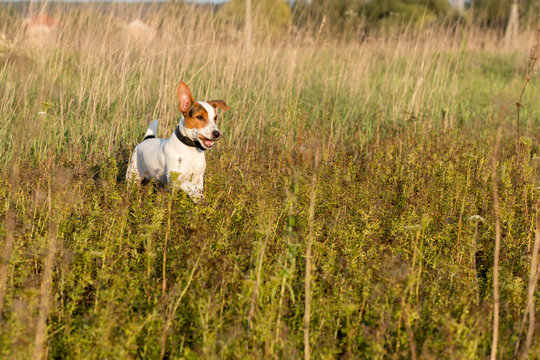
The Jack Russell Terrier is a little terrier that originated in England for fox hunting.
This breed will normally grow to around 15 inches maximum. It has a white body and can be combined with any color. It can be smooth, rough, or broken-coated.
The terrier is excellent for hunting small animals because of his stubborn and spirited nature. He is also very energetic.
It is a bold, not to say tenacious, working terrier that was bred to work on the ground and enjoys digging.
He’s self-assured, alert, and always prepared to work. Its lengthy legs aid in the pursuit of fast-moving prey.
The Jack Russell Terrier is well-balanced and has thick boning, indicating the endurance and strength required of a hunting terrier.
The majority of Jack Russell Terriers are happy-go-lucky and approach people with open arms. When you’re with unusual dogs, however, keep them close and under control.
This dog isn’t choosy about what kind of food he eats.
The dog will be content as long as it receives the necessary and appropriate number of vitamins and minerals, fresh water, and space to wander around.
You can feed kids both home-cooked and store-bought meals.
West Highland White terrier
The West Highland white terrier, or Westie for short, is a Scottish dog breed with a characteristic white rough coat and a fairly soft white undercoat.
Although it is a medium-sized terrier, growing to around 11 inches, it has longer legs than other Scottish terrier breeds.
It has a double coat of white fur that fills out the dog’s face and gives it a more rounded appearance.
The breed is clever, quick to learn, and may be a nice family dog, although it does not usually accept rough treatment.
Because they were previously employed to hunt rodents, the Westie is an energetic breed that is gregarious and has a high prey drive.
Mice and rats cannot easily get away from the Westie because of the speed and ferocity.
Allowing a Westie access to one or more balls or chew toys while indoors allows the dog to release pent-up energy.
It’s also a good idea to establish a consistent daily exercise program for your Westie, such as morning and evening walks and an afternoon play session.
Diet and nutrition are crucial to the health and well-being of Westies, as they are to other breeds.
It’s also critical that dogs of this breed consume high-quality meals that are heavy in animal proteins and lipids (which most cheap dog foods have very little of).
An adult Westie will need around 600 calories daily, which is around ¾ a cup of some dry food.
You should divide that into two meals. It will depend, however, on factors such as the weight, activity level, and age of the dog.
Depending on the breeder, the price of a West Highland White terrier can range from $600 to $1,400.
Dachshund
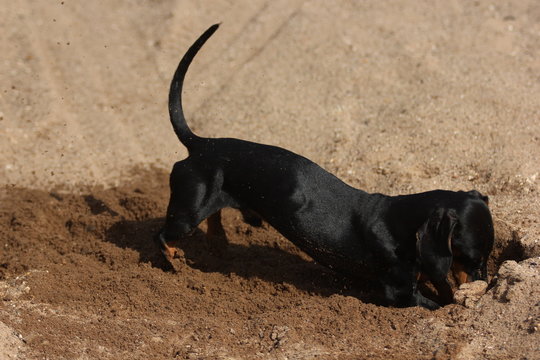
This dog breed is from Germany, where it was developed in around the 17th century.
The breed will grow to a maximum of 9 inches. Its coat can have a range of colors including blue and tan, cream, chocolate and cream, black and tan, black, as well as chocolate and tan.
Dachshunds are playful, but as hunting dogs, they can be stubborn. The dachshund is a small breed that is able to run fast after mice and rats. That makes it perfect for hunting vermin.
They are frequently obstinate, making training them difficult. Strangers and other dogs can make them hostile.
Unfamiliar persons irritate many dachshunds, and they will snarl or bark at them. Although the dachshund is a normally active dog, some are more laid-back.
Small children may not be suitable for dachshunds. Like every dog, dachshunds need a thorough introduction at an early age.
Even though a trained dachshund will behave well with children, there are chances of violent behavior when the dog is not trained properly. Children who play rough might also pose a challenge.
The price of Dachshund puppies varies substantially from one type to the next. On average, $200 to $3,500 is spent.
Because of the textures and colors of their coats, some dachshunds are in higher demand than others. The more a dachshund breed’s popularity, the higher its price.
Miniature schnauzer
The Miniature Schnauzer is a Schnauzer-type little dog that developed in Germany in the mid-to-late 1800s.
Solid black, black and silver, salt and pepper, and white are the four colors they are known for around the world. It normally grows to a height of around 14 inches.
The Miniature Schnauzer is a companion that is generally healthy, long-lived, and low-shedding.
You’ve got a great family dog when you combine an outgoing personality, a small size, and sporting good appearance.
They are robust, muscular, and brave without being aggressive, and were developed to be all-around farm dogs and ratters.
This is a bright, sociable, and trainable buddy that is small enough to fit into an apartment yet tough enough to patrol acres of fields.
Because of their small size, the dog is able to easily chase down mice and rats regardless of the space or size of home.
They get along well with children and other animals. Minis are tough little fellas who love to play hard. They are ideal watchdogs since they are focused on their home and family.
A trusted brand of high-quality, healthy dog food is required for a Miniature Schnauzer. A Miniature Schnauzer’s diet, like that of most dogs, is primarily composed of protein and fat.
Miniature Schnauzers are bright, friendly, and obedient dogs. Depending on the age, size, gender, and coat, it can cost as little as $250 to as much as $3,000. The Giant Schnauzer, in comparison, can cost up to $2000.
Lakeland Terriers
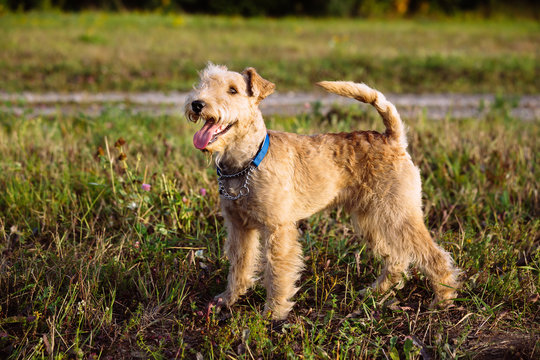
Farmers and ‘hound men’ bred them to fill a void in the Lake District of England. They sought a little dog that would be good around the farm and could be trained to hunt with selectivity.
Not only is the Lakeland terrier good at catching mice, it also likes it. It is in its DNA to chase down and catch smaller animals.
They will grow to around 15 inches, with the smallest growing to around 13.5 inches. The dog’s coats can be anything from red, liver, black, blue, as well as black and tan.
This bright and affectionate breed is perfect for a family.
This breed is vigilant, courageous, and somewhat independent, but it is not suggested for the typical owner because it has a proclivity for developing behavioral issues if not properly trained.
The Lakeland terrier is apprehensive of strangers, but gets along with other dogs and cats if properly socialized.
Because this dog enjoys chasing moving items, it should only be let off the leash in a fenced yard.
This breed gets along swimmingly with children, being bouncy, feisty, and joyful. This breed requires strict training because to its tenacity and vivacity.
The Lakeland terrier has a barking personality. It sheds very little hair. However, it does need to be groomed on a regular basis. Hand plucking the hair three times a year by an expert is recommended.
The price of a Lakeland terrier relies on a variety of criteria, including the breeder’s location, reputation, litter size, the puppy’s pedigree, breed popularity (supply and demand), training, socialization efforts, breed lines, and more.
All Lakeland Terriers sold cost an average of $400.
German pinscher
The German Pinscher is a dog breed that originated in Germany. It was used as a stable dog in the nineteenth century to defend the stable and kill rats and mice.
It is well-known for its hunting abilities and instinctive urge to defend house and family. It has excessive energy. You can take advantage of that and its hunting nature to get rid of mice and rats.
Shades of red and black with red patterns are acceptable hues. A typical adult GP will grow to a height of around 20 inches.
The breed is vivacious and energetic, and while they will adjust to apartment living, they will require activities that will physically and intellectually exhaust them.
The breed is a medium-sized dog that gets along with everyone in the family, including older children. It does, however, require a lot of activity and will retain its puppy-like exuberance as it grows older.
The Pinscher is a popular companion dog that is still employed as a working dog. It is intelligent and hence easy to train, yet its playful nature means it is prone to giddiness and can be easily sidetracked.
The Pinscher is relatively simple to maintain. It has a short coat that can be maintained clean by brushing it once a week, and it sheds moderately.
A German Pinscher puppy can cost anywhere from $2,000 to $3,000, depending on the breed.
TIDEWE Dog Hunting Vest with Chest Protector
- 【NOTICE】2-Finger Rule-Make sure it is a snug fit but does not restrict your dog from moving.
- 【Waterproof & Concealed】Waterproof 5mm neoprene closes to the "skin" for warmth and comfort; Patented Realtree MAX-5 camo ensures it remaining undetected, both in and out of the water.
- 【Increased Protection】Wear resistant and soft chest protection ensures that your hunting buddies stay happy in the outdoors; Common friction areas to improve comfort and mobility was trimmed.
Papillion
The Papillon, often known as the Continental Toy Spaniel, is a spaniel-type dog breed. One of the oldest toy spaniels, it gets its name from the long, fringed hair on its ears, which has a butterfly-like appearance.
Despite its small stature, the Papillion is very energetic, quick, and is able to chase down smaller animals for a long time. You can bet it will easily catch and kill vermin.
The breed will grow to around 11 inches. Their coats are normally white, sable, and white and chocolate.
A papillon’s demeanor is that of a joyful, friendly, and adventurous dog. They are neither bashful nor hostile.
Papillons make wonderful family pets, however they should be kept away from small children, as should any dog, due to a little child’s lack of understanding of a dog’s behavior and the risk of them doing something to upset the dog.
Although Papillons are generally healthy dogs, they are prone to some health problems.
Dental problems, tracheal collapse, and patellar luxation are among the most prevalent and worrying. Due to their small jawbones and teeth, Papillons have a particularly difficult time with poor dentition.
Papillon puppies purchased from traditional breeding farms have reasonable rates ranging from $1200 to $2000 per puppy.
Also read:
- 14 Best Dog Breeds For Off Grid Living
- 10 Best Homestead Animals (Chicken, Rabbits, Ducks And Mores)
Some thoughts
In my opinion, The Rat Terrier is a versatile companion dog that can hunt rats and vermin both above and below ground, as well as coursing small game and l would recommend it.
Dogs are loyal companions, and their importance in our lives cannot be overstated. However, choosing a breed that is compatible with your personality is critical.
Thank you for taking the time to read the post; we hope you found it to be informative.
